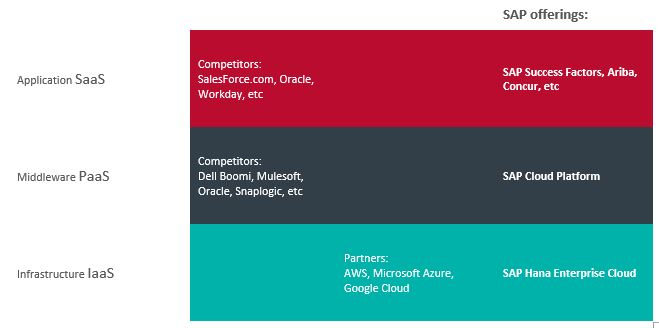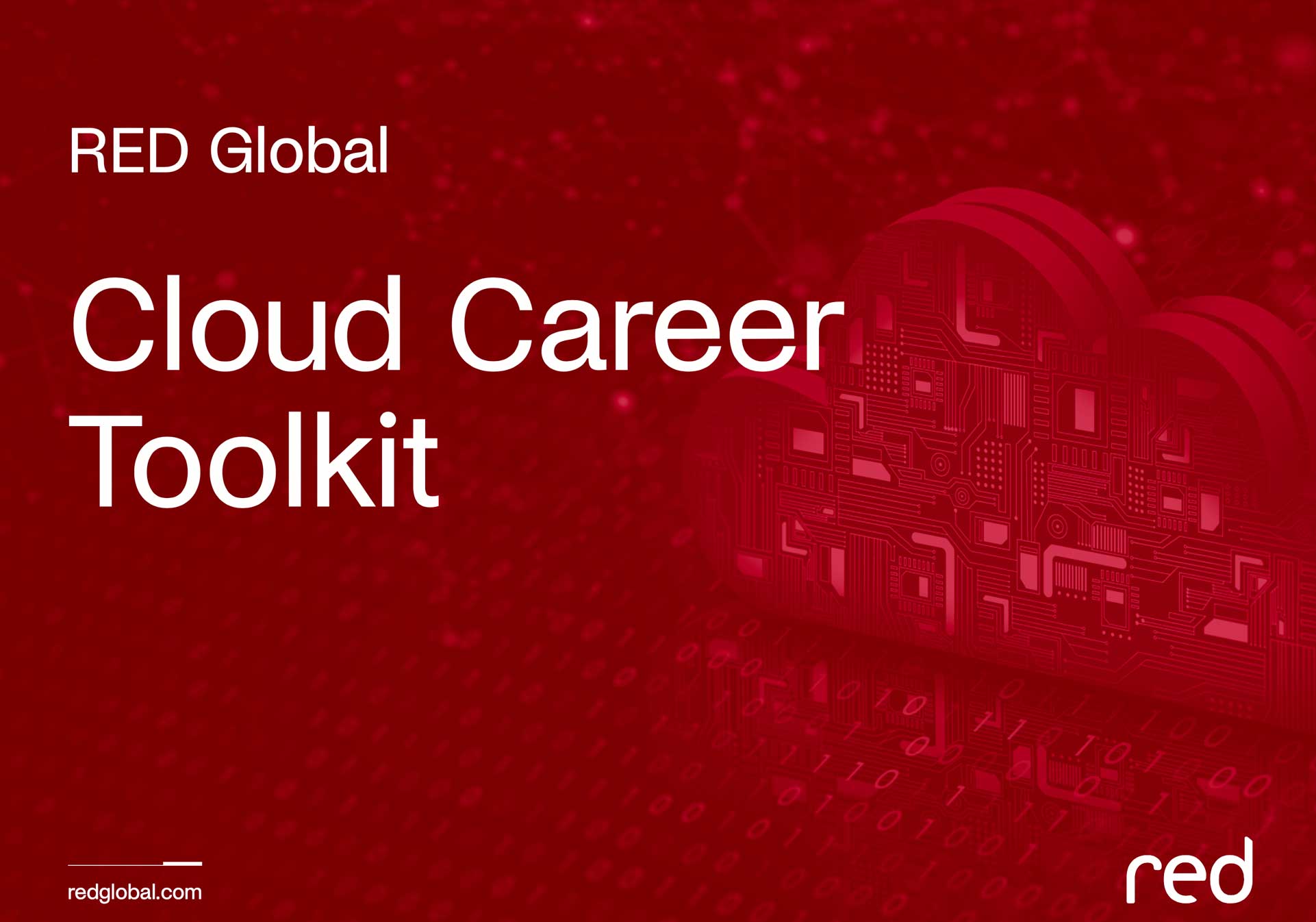How is Cloud Technology Affecting The SAP Ecosystem and SAP Customers?
Blog post

One of the hottest new technologies out there today is Cloud technology.
What do we mean by Cloud?
What do vendors really mean by Cloud, including SAP? Given its different meanings, many SAP customers get confused by the term.
Why the steady shift in SAP customers from running their computer systems in their own data centres, to running them in someone else’s cloud data centre over recent years?
If you ask any CIO or CFO, they believe that Cloud offers:
- More agility – Deploying IT systems faster and the belief that you can ramp Cloud systems up or down more quickly.
- Changing the financial model – The ability to fundamentally shift the IT financial model from a traditional CAPEX one, to an OPEX approach.
- Pay As You Go (PAYG) – The ability at the same time to opt for a PAYG payment approach.
- Lower Total Cost of Ownership (TCO) – A clear expectation of a lower TCO. Be careful, this is not always the case and the reverse may be true. It’s all in the detail.
SAP’s message to Wall Street could not be clearer:
“We have changed from a software licenses vendor, to a leading cloud services vendor”.
The 3 Basic Layers of Cloud
To dig deeper, we need The 3 Basic Layers of Cloud to frame our discussion.

The diagram identifies;
- three different layers in Cloud technology.
- some of the more important SAP offerings in each layer.
- some major competitors and partners of SAP.
In any Cloud discussion, we need to be crystal clear which of the three layers we’re referencing.
Layer 1 – Software-as-a-Service (SaaS) Cloud Applications
The top Cloud layer includes the other two layers to offer a complete application, delivered from a Cloud vendor’s data centre.
Today these tend to;
- be heavily pre-configured
- feature modern user interfaces
- can be updated very quickly by the SaaS vendor
SaaS solutions, therefore, tend to be very standardised so they can be shared on so-called Public Cloud infrastructures.
It has been a struggle for SAP to make the leap from selling licensed applications (e.g. SAP ECC, SAP BW) to selling SaaS solutions to catch up with the big CRM vendor players like Salesforce.
SAP’s response to this challenge was the acquisition of other successful SaaS specialist vendors.
Over the last eight years SAP’s acquisition totals $28.6BN, acquiring, amongst others;
- SuccessFactors
- Ariba
- Concur
- Fieldglass
- Callidus
SAP’s latest fourth-generation ERP solution is S/4HANA which can be installed both on-premise in a customer (or outsourcer) data centre, or as an SAP SaaS solution.
Generally, SAP customers prefer to keep their SAP ERP applications on-premise, because they are so customised and so mission-critical that they need to tightly control them. This has been attributed to SAP’s struggle with this new solution, called SAP S/4HANA Cloud.
That said, SAP customers are often willing to buy the acquired SAP SaaS solutions if the deal is right.
Layer 2 – Platform-as-a-Service (PaaS) Cloud Middleware
The middle layer always includes the lower layer to offer a modern, integrated, software “platform”, delivered from a Cloud vendor’s data centre.
Fundamentally they offer a modern software development environment to build entirely new SaaS applications. PaaS tools can be used to extend existing SaaS applications with their most important use case being to provide flexible and reliable application software integration mechanisms between existing SaaS solutions and on-premise applications.
Within the number of major players in the PaaS marketplace, SAP offers its own product here, called SAP Cloud Platform.
It is a strong product and is used by SAP and some partners as the development environment to build and run brand new applications. This includes applications incorporating the very latest Internet of Things (IoT), Artificial Intelligence and Machine Learning and Business Analytics technologies.
Layer 3 – Infrastructure-as-a-Service (IaaS) Cloud Infrastructure
This is probably the layer of greatest interest and significance to SAP ERP customers today.
Existing licensed SAP on-premise applications like SAP ERP can be run in an IaaS Cloud data centre without impacting the vital application layer controlled by the customer.
When the hardware in the data centre of an SAP customer becomes the end of life they have a big decision to make. Do they;
- Buy new CAPEX hardware for their data centre?
- Switch to an SAP Managed Cloud service provider to start consuming IaaS, instead of running their own hardware?
SAP customers typically prefer a certified SAP Managed Cloud service provider who includes SAP Basis operations services on top of the IaaS.
SAP Basis plus IaaS represents complete technical responsibility for the SAP systems, including the database – SAP HANA, for example.
Today’s SAP customers usually prefer Private Cloud IaaS over Public Cloud IaaS because it features more dedicated systems against Public Cloud IaaS shared systems.
Some examples of SAP Managed Private Cloud service providers which include SAP Basis operations services, of various flavours are:
- SAP, with their HANA Enterprise Cloud (HEC) service for HANA-based systems
- Hardware vendors, e.g. HP, through their DXC spin-off, IBM, Hitachi (who acquired oxya)
- Traditional SAP outsourcing (run) vendors, like Atos, Capgemini, Accenture, HCL, Infosys
- Newer specialists, including Virtustream, Symmetry, T-Systems
- Country-based specialists, e.g. itelligence, Ensono
The major Public Cloud IaaS vendors offering SAP systems are:
- Amazon Web Services (AWS)
- Microsoft Azure
- Google Cloud
These vendors have such deep wallets that they claim to offer much larger scale data centres and potentially lower-cost infrastructure.
Because none of the Public Cloud IaaS vendors includes SAP Basis operations services, they partner with other SAP service providers to offer a complete solution. For example, AWS partners include the big guys i.e. Accenture, Capgemini and Infosys but they are also teaming up with much smaller, niche, SAP service providers, like Lemongrass and Keytree here in the UK.
When an SAP customer moves its SAP systems to an SAP Managed Cloud service provider they typically expect these vendors to offer a mission-critical run service, often with some sort of disaster recovery backup data centre.
Key Take-Aways
- SAP continues to face challenges in Application SaaS – SAP customers prefer to keep their SAP ERP applications on-premise because they are so customised and so mission-critical that they need to tightly control them. This has been attributed to SAP’s struggle with this new solution, called SAP S/4HANA Cloud.
- SAP retains its stronghold in Middleware PaaS – SAP’s SAP Cloud Platform is a strong product and is used by SAP and some partners as the development environment to build and run brand new applications.
- Competition has increased in Infrastructure IaaS – Today’s SAP customers usually prefer Private Cloud IaaS over Public Cloud IaaS. These vendors have such deep wallets that they claim to offer much larger scale data centres and potentially lower-cost infrastructure and can afford to partner with other SAP service providers to offer a complete solution.
- Recruitment relationships need to expand – Many SAP customers who have migrated their database to SAP HANA and moved to SAP Managed Cloud service provider will ask their service provider first for assistance in resourcing new SAP projects. This means that recruitment will need to adjust its approach to include new players as well as maintain relationships with established SAP SIs, like Accenture.
Dr Derek Prior spent 19 years as an analyst specialising in SAP at Gartner and AMR Research, advising organisations all around the world on SAP strategy and best practices.
Get in touch if you would like to receive further information and advice from our consultants or Derek Prior.
Your Cloud Career Toolkit
Resources
Finding your dream job and navigating your way through a successful career can be challenging.
When it comes to finding a cloud job and dealing with the challenges that may arise in your cloud career, we’ve got the expertise to ensure your success.
In this Cloud Career Toolkit, we'll explore the exciting world of cloud computing and show you how to take the first steps towards a rewarding career in this dynamic field.
If you have any feedback about the toolkit, we'd love to hear from you.
To download our free Cloud Career Toolkit, fill out the form and click 'download'.




.png?r=a0-s768.768-o)
.png?r=a0-s768.768-o)
.png?r=a0-s768.768-o)
(1).png?r=a0-s768.768-o)
.png?r=a0-s768.768-o)
.png?r=a0-s768.768-o)
.png?r=a0-s768.768-o)
.png?r=a0-s768.768-o)
.png?r=a0-s768.768-o)
.png?r=a0-s768.768-o)
.png?r=a0-s768.768-o)
.png?r=a0-s768.768-o)
.png?r=a0-s768.768-o)
.png?r=a0-s768.768-o)
.png?r=a0-s768.768-o)
.png?r=a0-s768.768-o)
.png?r=a0-s768.768-o)
.png?r=a0-s768.768-o)
.png?r=a0-s768.768-o)
.png?r=a0-s768.768-o)
.png?r=a0-s768.768-o)
.png?r=a0-s768.768-o)
.png?r=a0-s768.768-o)
.png?r=a0-s768.768-o)
.png?r=a0-s768.768-o)
.png?r=a0-s768.768-o)
.png?r=a0-s768.768-o)
.png?r=a0-s768.768-o)
.png?r=a0-s768.768-o)
.png?r=a0-s768.768-o)
.png?r=a0-s768.768-o)
.png?r=a0-s768.768-o)
.png?r=a0-s768.768-o)
.png?r=a0-s768.768-o)
.png?r=a0-s768.768-o)
.png?r=a0-s768.768-o)
